A thyroid ultrasound is a painless imaging test that helps doctors diagnose problems with your thyroid gland.
It's the most useful imaging test for detecting and defining abnormal growths (nodules) of the thyroid gland.
Your doctor will tell you the results of your ultrasound within days.
What Is a Thyroid Ultrasound?
An ultrasound involves using sound waves to produce an image of the inside of the body. It doesn't require cutting through the skin and doesn't use radiation, so it's very safe.
UPMC radiologists are experts in using ultrasound to help diagnose thyroid problems.
Your doctor may suggest an ultrasound if your blood test showed problems with how your thyroid is working. For instance, you may have too high levels of hormones in your blood.
Or, your doctor may feel a lump in your neck.
A thyroid ultrasound can show the doctor whether the lump is on the thyroid or somewhere else. Your doctor can also see if you have other lumps or nodules and whether they look cancerous or benign.
Your doctor may order another thyroid nodule ultrasound in the future to see if a growth has changed in size.
An ultrasound can also help doctors guide a thyroid FNA biopsy.
Thyroid Ultrasound Benefits
An ultrasound:
- Is most often painless.
- Doesn't use radiation (as used in x-rays).
There are no known risks to having a thyroid ultrasound.
What to Expect Before, During, and After a Thyroid Ultrasound
Before your thyroid ultrasound
You don't need to follow any special diet before your thyroid ultrasound.
You should avoid wearing a necklace or large earrings on the day of your ultrasound.
Your ultrasound tech will need easy access to your neck area. They may ask you to remove your clothing and give you a gown to wear. If your shirt has a wide collar, you may wear your own clothing.
During your thyroid ultrasound
Your ultrasound tech will:
- Ask you to lie face up on an exam table. They may tilt the table so you're in a good position for the test.
- Apply a clear gel to your neck.
- Move a small, smooth device along your skin that sends and receives sound waves. The sound waves make pictures that show up on a computer screen.
- Watch the screen as they push and move the wand to view your thyroid gland from different angles.
- Take many thyroid ultrasound pictures for your doctor to view. They don't have the training to tell you the results.
After your thyroid ultrasound
Experts in thyroid ultrasounds will view your scans.
Your doctor will share your test results:
- Over the phone.
- Through your UPMC patient portal app.
- At an appointment.
Any UPMC facility can access your images any time, day or night, if you ever need them in the future.
Make a Thyroid Appointment at UPMC
If you think you have a thyroid problem, contact us.
Find a UPMC endocrinology location near you to make an appointment or learn more.


















